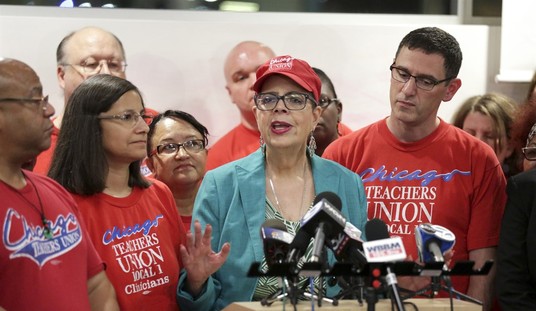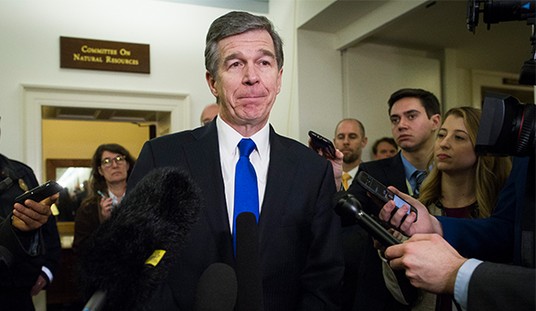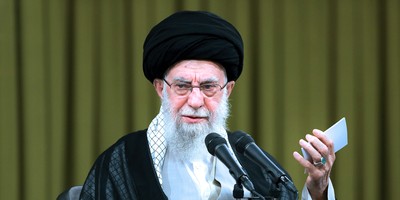Though President Barack Obama’s speech last Tuesday has by now been examined to death, I venture a few observations—more about the style and setting than the substance. Critiques of the latter have been largely unfavorable and unflattering, not much to add there. It seems that Mr. Obama is not pleasing many people these days. He is even beginning to appear to some of his most zealous supporters as, well, almost mortal.
That said, it was the backdrop and delivery of the speech that struck me. This was the first Oval Office address of his nearly 17-month presidency—an interesting fact itself. But before dealing with that, I must ask this question:

What was the deal with his hands?
I found myself distracted by his almost frenetic gesticulation. I couldn’t help but think of Will Farrell’s character, Ricky Bobby, in the movie Talladega Nights. In the past, men talking to the nation from the Oval Office usually held papers (years ago to read them and thereafter as a prop) or at least realized that speaking from behind a desk was not the same thing as delivering a rousing stump speech in a gymnasium.
I know this may sound like nitpicking—and maybe it is to a point. But the nonstop use of his hands during the 18-minute address left the impression in my opinion that he was uncomfortable—even out of place.
Presidents give speeches all the time. They pontificate and pronounce from platforms, podiums, and sometimes pulpits. Presidents have several speechwriters and are seldom at a loss for someone’s words. Occasionally they stray from the prepared remarks and “chase rabbits” (an old term for preachers meandering through a sermon)—though Mr. Obama seems to do this at his own peril and with the collective “Yikes!” of his staff.
Speeches in the Oval Office and from behind the presidential desk are designed to be a cut above the rest and are usually reserved for the most serious issues and somber moments. Before the age of television, the most dramatic way for a chief executive to maximize the image of the presidency in crucial national moments was to travel up the boulevard to address Congress. Woodrow Wilson spoke there about making the world safe for democracy in 1917, and Franklin Roosevelt, who did not actually talk to the country on December 7, 1941, spoke there the next day about that date that would live in infamy.
Recommended
Harry Truman was the first to use television in the Oval Office. He talked to the nation about the fight in Korea on July 19, 1950, though he had waited 25 days while the battle raged before doing so. Mr. Truman also shared his farewell to the nation in January of 1953 in a televised Oval Office address. Speaking of farewells, likely President Dwight D. Eisenhower’s most famous presidential address was his last one delivered from the Oval Office. In it he warned about the dangers of “the military-industrial complex.”
John F. Kennedy was really the first television president. Better known for his communication skills, command of detail, and wit during his many live televised press conferences in the old State Department auditorium, he made the Oval Office the venue of choice for important matters. And it has been so ever since.
Of course, likely the most famous Oval Office address took place on October 22, 1962. Kennedy sat on a pair of pillows cushioning his chair and wore a corset for his bad back, sitting up straight and staring into the camera telling us about Soviet missiles in Cuba. The next day, I joined school children across the country in a drill requiring us to get under our desks and heard the now odd-sounding suggestion not to look at the flash.
It was a moment that caught much of America by surprise when at the end of an Oval Office address on March 31, 1968, President Lyndon Johnson declared that he would not be running for re-election. LBJ relished the moment. His dramatic surprise shook the political world.
It was, however, Richard M. Nixon who made the most televised Oval Office speeches to date. And it’s a record Barack Obama will likely never threaten. When Mr. Nixon appeared on television sitting behind the presidential desk on August 8, 1974, he reminded everyone right up front that it was the 37th time he had addressed the nation on matters of importance from that office.
The build up to this had been agonizing for Nixon, not to mention the entire nation. Just a day or so before, White House speechwriter Ray Price had been summoned to the office of Nixon’s Chief of Staff, General Alexander Haig.
“We’ll need a thousand words,” he told Price.
Though his resignation speech is likely the best remembered Oval Office presentation by Richard Nixon, an earlier address from behind that desk was a high water mark for him and his presidency. It was on November 3, 1969, as he appealed to what he characterized as the nation’s “Silent Majority.” By the way, he wrote that speech all by himself.
Gerald Ford’s first Oval Office address was on a Sunday morning in September of 1974, when he announced that he was pardoning Richard Nixon. Yep—on a Sunday morning.
Then there was Jimmy Carter. In 1979, after several days of mystique and speculation, he “came down from the mountaintop”—in this case Camp David—and gave the nation a good “talking to.” It was a lecture—the kind people sometimes refer to as a “come to Jesus” chat. And though he never actually used the word, it became known as “the Malaise Speech.” It included such peppy gems as: “We can see this crisis in the growing doubt about the meaning of our lives and in the loss of a unity of purpose for our nation.” Like Wilson, and now Obama, Mr. Carter liked to talk down to America, while talking America down.
By the time his single tortured term was winding down, many began to wonder if the presidency was too big of a job for any one man. Then came Ronald Reagan who knew a thing or two about communicating. He addressed the nation 34 times from the Oval Office, though he is best remembered for speeches he gave while out of town in places like Normandy and Berlin.
His remarks on the day the space shuttle Challenger exploded in 1986 touched the nation. And when he was ready to say his goodbye at the end of his presidency, he spoke from the Oval Office. Peggy Noonan, one of his speechwriters, was invited to be there for the moment and she noted that just before he went on the air he closed his eyes. She asked another lady in the room, “What’s he doing?”
“He’s praying,” came the answer.
Soon Reagan opened his eyes, winked at the two ladies, and right on cue began his speech. A bit later, as he approached the end of his remarks, he urged Americans to develop an “informed patriotism”—the kind that remembers “what it really means to be an American.” He reminded us of the importance of remembering why the Pilgrims came to America and who Jimmy Doolittle was. He also spoke about “a city on the Hill.”
Based on his first effort, and in light of history, I wonder if the Oval Office might not be the best venue for President Obama.

























Join the conversation as a VIP Member